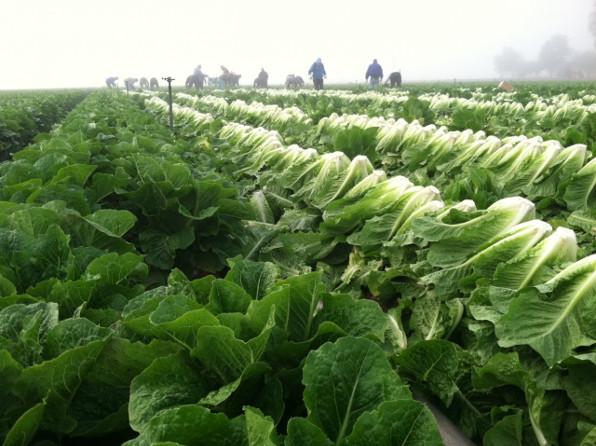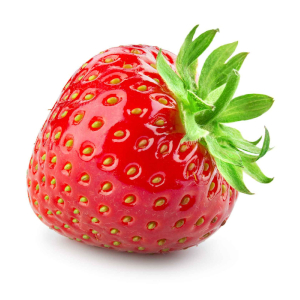The Environmental Working Group (EWG), a non-profit environmental advocacy organization, has released its annual ‘Dirty Dozen’ list. The list ranks the 12 produce types most likely to be contaminated with pesticides…
 A mile-long California field of Romaine Lettuce in mid-harvest.
A mile-long California field of Romaine Lettuce in mid-harvest.
Pesticide intensive agriculture, and a high E.coli risk…
The group
The EWG mission statement reads thus: “Our mission is simple: To empower you with breakthrough research to make informed choices and live a healthy life in a healthy environment.”
Okay. That resonates with me. What have you got?
The Dirty Dozen
Among the Group’s annual publications is its famous (or is that infamous?) Dirty Dozen (DD) list. It’s a list of the 12 produce varieties that were found to be most contaminated with residual pesticides from their growing ‘experience’. The tests behind the contamination levels are conducted by US government agencies charged with regulating the use of agricultural pesticides.
The FDA and the USDA tested 47,510 samples of 46 non-organic fruits and vegetables for 254 contaminants. More than 200 of those were detected, collectively, in the members of the DD list.
This year’s DD list rolled out as follows:
- Strawberries
- Spinach
- Kale, Collard & Mustard greens
- Grapes
- Peaches
- Pears
- Nectarines
- Apples
- Sweet and Hot Peppers
- Cherries
- Blueberries
- Green Beans
By contrast…
The EWG also publishes an annual Clean Fifteen list. It showcases the 15 least-contaminated produce items of the year:
- Avocados
- Sweet Corn
- Pineapples
- Onions
- Papayas
- Sweet Peas
- Asparagus
- Honey Dew Melons
- Kiwis
- Cabbages
- Watermelons
- Mushrooms
- Mangos
- Sweet Potatoes
- Carrots
Yes, but…
The EWG DD list ranks produce items according to whether contaminants were detected or not. The levels of those contaminants are not taken into account. An examination of the source test results shows most of the chemicals detected were found only in trace amounts.
A CNN report notes: “About 70 percent of non-organic produce tested by the USDA and FDA have pesticide levels within the legal limits allowed by the US Environmental Protection Agency, according to the EWG DD report.”
“The dose makes the poison, not [simply] its presence or its absence, and that dose determines the potential for harm,” says Carl Winter, Emeritus Professor of Cooperative Extension at the University of California, Davis. “In many cases you’d have to be exposed to a million times more than what we’re [routinely] exposed to before you’d even see any effects.”
My take
First, I need to point out that the Dirty Dozen list contains 9 produce types that folks tend to eat without peeling them. We should, of course, wash all fruits and veggies we intend to eat, whether we’re going to cook them (which would kill bacteria) or not. The problem with the DD list members is, a lot of folks don’t bother to wash these fruits and veggies.
The CF list, on the other hand, contains only 5 produce items that might not be washed or peeled before eating. Of those, only Cabbages and Mushrooms are likely to be eaten raw.
And let’s not forget that many of the DD list fruits and veggies are grown close to, or under the ground. Or are ‘soft fruits. All of which are more pesticide-intensive to grow than most of the members of the CF list.
One more thing (as TV detective ‘Columbo’ loved to say)… It’s also important to remember that the DD and CF lists only account for ‘dirty’ and ‘clean’ produce items based on pesticide contamination. We’ve seen, in recent years, a much more serious – even deadly – explosion in incidents of produce contamination with bio-hazards such as E.coli and Salmonella.
So… On balance, I’m not concerned about trace amounts of chemicals on my food…
~ Maggie J.

